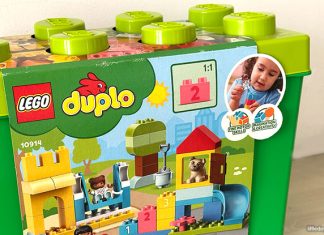
Financial planning for a family is not easy and creating a family budget plan can be a challenge, especially if you are working with a very tight budget or in a financial pinch. Have you ever checked your bank account balance and wondered where all the money from your salary went? If yes, you are not alone; many people do not pay attention to how much money they spend or what they spend on, and when they realise it, it’s always too late.
Your financial planning or budgeting determines how you manage your family finances. It is important for keeping a track record of how you spend your money and it also helps you maintain financial stability.
Tracking your finances and following a strict financial plan makes it easy to pay your bills on time, create a family emergency fund, provide the family’s needs efficiently, and save for major expenses such as buying a car or building a home.
This article offers a step-by-step guide to family budgeting and everything you need to know about family budgeting.
MID AUTUMN FESTIVAL: Lanterns, Lights and Festive Fun
GIVEAWAY FOR ENEWSLETTER SUBSCRIBERS: LEGO DUPLO Deluxe Brick Box
Importance of a Family Budget Plan
Before looking at the steps involved in family budgeting, let us first consider the essence of having a family budget:
• A good and well-evaluated family budget plan puts you in stronger financial independence for day-to-day uses and the future.
• A family budget helps you avoid unnecessary and wasteful spending so that you can focus on the priority expenses and achieve your financial goals faster.
• A family budget helps you create a clear financial goal for your family so that you have an insight into the importance of financial planning.
• Family budgeting is the only way to track your spending and understand how and where your income is channeled.
Step-by-step guide on how to create a Family Budget Plan
Are you ready to handle your family budget? Here are seven steps to follow for effective family budgeting.
1. Set a clear financial goal
It is good to understand the need for a family budget plan before coming up with one. Ask yourself this question; “what is the essence of a financial plan for my family?” or “why do I need a financial budget for my family?” In answering this question, you will have an insight into the significance of family budgeting.
Family budgeting helps you manage your finances and have peace of mind in your spending. Note down your main goal for family budgeting, so you don’t forget because it is important to stick with the plan.
2. Use digitalised budgeting tools
Technology has revolutionised so many aspects of life including budgeting. Now you can have a budget planner software that does all the calculations for you, and all you need to do is to key in data. It is a great way to jumpstart your family budget plan.
Doing your financial budgeting manually can be a real challenge, especially when it comes to keeping a track record; that is why a digital budgeting tool is very significant for use. Digital budgeting tools like Google Sheets are available for free download and use, help reduce occurrences of any errors and have a simple usability feature.
3. Calculate and analyse your income
The next step of family budgeting is to have a clear view of all your income within a specific time, say, a month. In some cases, in a family setting, you might consider the total earnings from your income and your partner’s income. This is just to ensure that you have the correct amount to work with to draw the family budgeting plan.
At this step, it is good to consider all your income including your side hustles and work with the lower end of the income amount. Also, you can channel the excess amount to major savings or paying loans, in case you have any debts.
4. List down all your expected expenses
After summing up and analysing your income amounts, the next step is to list down everything you plan to spend money on for that given month; these may include bills, insurance, school fees, general house supplies, and groceries, among other expenses.
Make a priority list, let the most essential expenses top the list and the least essential expenses follow.
Calculate the total expenses on your expenses list and subtract this value from your total income. You can channel the remaining amount to other uses that are not a priority, such as family vacations, dinners and treats, and any other activities your family likes to engage in.
5. Assess ways to minimise spending/stop unnecessary spending
In most cases, after listing down expenses, you will always find some very unnecessary spendings that you and your family can do without. An excellent example is that you may realise that you have been spending more money eating out than preparing a meal at home.
Another good example is, eating out for lunch during work hours instead of carrying home-prepared food to work. You can channel the extra money to other priority expenses, such as paying off your debts or savings.
6. Track your spending
Having a workable family budget plan is an achievement, and it is something that should last for a while. After a while, you can clearly see your spending pattern and stick to your budget. You can use a budget planner and tracer software to access your family’s spending within a specific period.
7. Evaluate your family budget at intervals
The hardest part is over by this stage. All you need to do is check to confirm if the budget is working well for your family finances or if you need to make improvements and modifications.
An excellent example of such modifications would be if a new member is born to the family. The priority of expenses automatically changes and you will start prioritising baby supplies like diapers and baby food. From this example, you notice the need to assess the family budget at intervals, say, monthly. Every time you evaluate the budget, notice what your budget has achieved so far.
Further Thoughts on Creating a Family Budget Plan
If you have read through the whole article up to this point – congratulations! You can formulate an effective family budget plan. We hope this article helps you make positive family budgeting decisions and guides you, step by step, on how to formulate an effective and workable family budget.
The main goal of family budgeting is to help you manage finances better and keep a track record of your family spending. Remember that a family budget might change at any time depending on the changes within the family.























